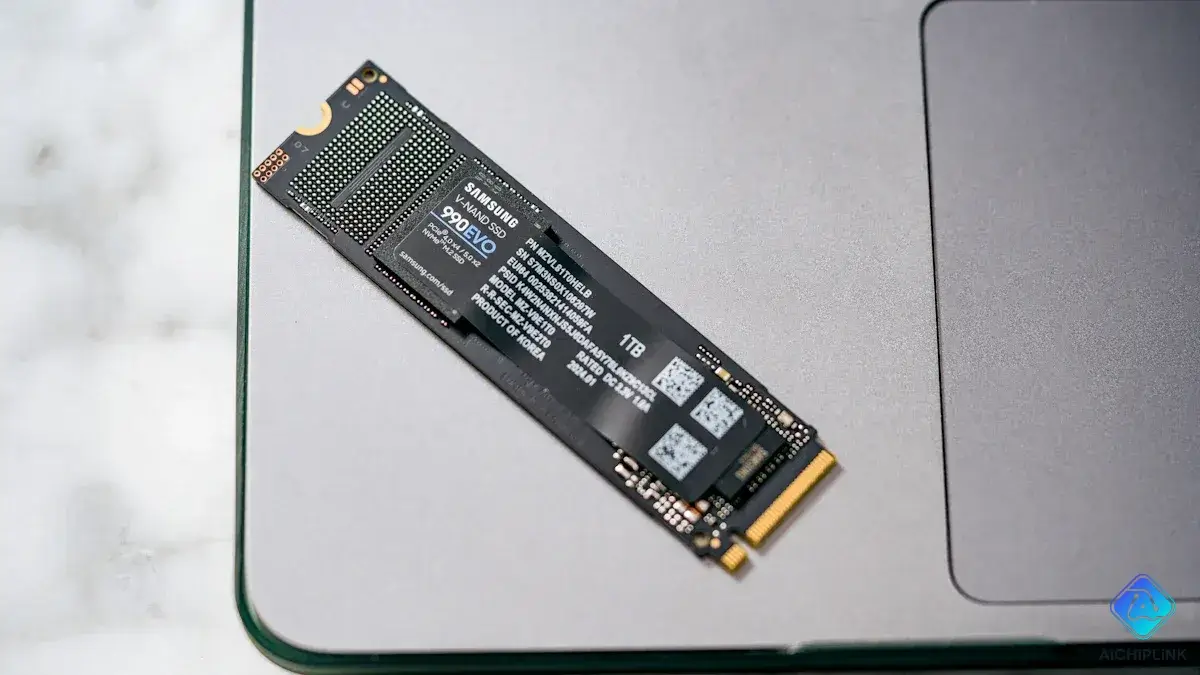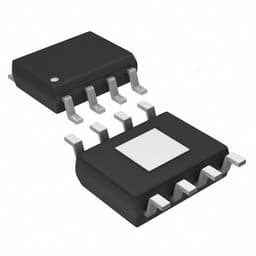
The NAND market will change a lot in 2025. Companies will see prices drop early in the year. Top companies may cut production, which could help prices later. The global NAND flash market will reach $85.84 billion. This is more than $80.68 billion in 2024.
| Year | Market Size (USD Billion) | CAGR (%) |
|---|---|---|
| 2024 | 80.68 | N/A |
| 2025 | 85.84 | 6.39 |
Knowing these trends helps groups buy better and use new storage. It also helps them lower risks. AI and data centers will need more NAND, which will help the market grow. But supply chains are tricky and costs are going up, so planning is important.
Key Takeaways
- The NAND market may reach $85.84 billion in 2025. This is because AI, data centers, and electronics need more NAND. Prices will change during 2025. At first, prices may go down. Later, prices might go up if supply drops and demand grows. Companies should use many suppliers. They should watch the market to avoid problems. This helps them handle changes in the NAND market. Using 3D NAND technology will make storage bigger and faster. This is very important for AI and cars. Knowing when demand and production change helps businesses plan. It also helps them keep storage costs low.
NAND Market Overview 2025
Market Size and Growth
The NAND market will keep growing in 2025. The market size should reach $85.84 billion. This is more than $80.68 billion in 2024. Many industries want more storage now. Memory market trends show strong growth for NAND flash controllers. Many things use NAND, like smartphones and SSDs. Data centers also need more storage. Companies spend money on new technology. They use 3D NAND to get better storage.
Key trends in the market include:
-
New technology and ideas help the market grow.
-
AI, data centers, and phones need more NAND.
-
Companies compete, so prices go down.
-
Different places affect how the market changes.
The market is split by what it is used for. It is also split by controller type and interface. This helps companies meet special needs in storage. The future looks good for NAND. Companies keep investing and new uses keep coming.
Supply and Demand Shifts
The NAND market is now more balanced. Before, there was too much supply. In 2023, prices and profits dropped a lot. Samsung and others changed how they spend money. They focus more on advanced memory and HBM. This helped the market get better.
| Evidence Type | Details |
|---|---|
| Price Trends | NAND flash prices may go down because of too much supply. Makers might cut how much they make. |
| Demand Factors | AI and datacenter upgrades will help the market recover later in 2025. |
| Market Dynamics | Prices and demand may be weak early in 2025. Big buyers change the market in cycles. |
| Shipment Growth | SSD shipments should go up in late 2025. AI servers will need more storage. |
Supply and demand are now more even. More people want AI and storage. This helps keep the market steady. People in the industry should watch memory trends. This helps them get ready for changes in the NAND market.
Memory Market Trends and Pricing
Price Fluctuations in 2025
The memory market trends in 2025 show prices change a lot. At the start of the year, the NAND market sees prices go down for a short time. SanDisk will raise prices by more than 10% for all NAND flash products on April 1, 2025. This shows the market has less supply. The price hike is because costs are higher, like tariffs. It also matches how the industry reacts to strong demand from AI and changes in production.
In the third quarter, experts expect prices to go up. TrendForce says NAND flash prices will rise by 5–10% in Q3 2025. This happens when makers cut production and lower inventory. The old problem of too much supply starts to get better. Data centers spend money on AI, so they need more enterprise SSDs. This big demand helps push prices higher. In September 2025, prices may jump a lot. This could mean more demand or less supply. The market needs steady interest to keep prices high for a long time. Signs show prices may settle after the jump.
Note: The NAND flash pricing in 2025 will keep changing. Companies should watch for quick drops and sudden jumps. How the market reacts will affect storage plans this year.
Factors Driving Pricing Trends
Many things affect memory market trends and pricing in 2025. Seasonal demand is important. For example, back-to-school and holiday sales make people buy more electronics. This means more need for storage. Investment cycles matter too. Companies build new data centers and use more AI, so they want more NAND and SSDs.
Big makers like Micron, Kioxia, and Samsung cut production to balance the market. They make less because demand is weak for consumer electronics and enterprise SSDs. Lower NAND prices since late 2024 made them change. More competition from Chinese suppliers adds pressure. Makers change plans to keep making money.
Extra demand for QLC products and clearing old stock also change prices. When companies sell old chips, they can bring in new technology. This helps keep prices steady. Memory market trends show strong demand for enterprise SSDs and AI will keep growing. Efforts like cutting production and managing inventory help keep prices stable.
Tip: Businesses should watch key trends in the NAND market. Checking production, seasonal demand, and investment cycles helps plan for price changes and control storage costs.
All these things make the market complex. Companies that know memory market trends can make smarter choices for buying and storing. The NAND market in 2025 will help those who learn and change fast.
Technology Trends in NAND Storage

3D NAND and High-Density Storage
The nand market is moving toward 3D nand technology. This helps companies make storage that is bigger and faster. The global 3D nand memory market is growing fast. It could be worth $160.3 billion by 2032. In 2023, it was $62.8 billion. Many industries want better storage for their devices. Consumer electronics, like smartphones and laptops, use a lot of 3D nand. In 2023, these products used almost 41% of all 3D nand.
-
Companies stack 3D layers to build chips with up to 232 layers. This makes storage hold more data.
-
High-capacity SSDs are common in PCs and electronics.
-
AI and machine learning need fast data, so they use 3D nand.
-
Cars and IoT devices also need strong, high-density memory.
Note: 3D nand works better and stores more than old 2D flash. This trend helps the market grow.
Emerging Memory Technologies
New memory types are changing how we store data. These new technologies help with AI, edge computing, and fast tasks. The table below shows some important new memory types:
| Technology | Key Features | Applications |
|---|---|---|
| MRAM | Low latency, high endurance | AI, edge computing |
| ReRAM | Multi-level cell storage, sub-nanosecond switching | AI workloads |
| 3D XPoint | High performance, energy efficiency | High-performance computing |
These new memory types work with nand flash. They give better speed and use less power. This helps companies build smarter and faster storage.
Advancements in Packaging and Controllers
Better packaging and controllers make nand storage more useful. New interface standards, like PCIe Gen5 and NVMe 2.0, move data faster. Some controllers now reach over 14 GB/s and millions of random IOPS. DRAM-less controllers use host memory buffer technology. This saves money but keeps performance high.
Manufacturers also try to save energy. Many want SSD controllers that use less than 7 watts. They add smart power and heat controls. These changes make nand flash storage cheaper and help it work in many places, from edge devices to big AI systems.
Tip: Companies that follow these trends can find better storage and manage costs as the market grows.
Application Trends in Storage
Servers and Data Centers
In 2025, storage is very important for many industries. The table below shows how each industry uses new storage:
| Industry | Leading Application Trends |
|---|---|
| Consumer Electronics | More people want smartphones, tablets, and wearables that need faster data and better storage. |
| Automotive | Cars use more driver-assistance, entertainment, and electric systems. |
| Data Centers | Digital changes make data centers grow, so they need bigger and energy-saving NAND storage. |
| Industrial Automation | Factories want tough NAND for smart machines and fast data work. |
| Telecommunications | 5G networks and edge computing need fast and strong NAND memory. |
Data centers are getting bigger as more work moves online. They need storage that can grow and save energy for lots of data. In 2025, businesses use new things like QLC NAND and PCIe Gen5. These help with big and fast jobs, especially for AI. North America leads this growth. The consumer market grows slower, so storage needs are different for each group.
AI and Automotive Storage
AI and cars both need better storage now. Companies like Kioxia show how fast storage helps AI at big events. Flash memory makes AI work better and faster. Big SSDs help hold large amounts of data, which is important for AI.
-
Fast storage helps train AI models by holding training data.
-
Big SSDs keep huge data sets for AI and cars.
-
SSDs work better and use less power than old hard drives.
-
Fast storage gives data to GPUs, so AI runs quicker.
Cars use more AI for smart driving and self-driving. These features need strong storage. Bigger SLC NAND devices help run complex software and maps. New V2X tech lets cars share data quickly and safely, so they need more storage.
Car entertainment systems now have more features and need bigger SLC NAND. AI in these systems needs strong storage too. The industry wants SLC NAND that works in tough places and keeps data safe. As AI gets bigger, NAND flash storage stays important for speed and future needs.
Sourcing and Supply Chain Strategies
Supplier Diversification
The NAND market in 2025 has many problems. Companies see supply and demand go up and down. This causes them to cut production and change prices. Trade rules, especially with China, make making products harder. To handle these changes, companies use different suppliers and plan well. SK hynix made the AIN (AI-NAND) Family for the AI market. This shows how companies change products for new needs.
Many businesses use different ways to get more suppliers. They split production to balance new and old tech. They talk often with suppliers and customers to match what is needed. They also buy machines that can switch products fast. The table below lists some common ways:
| Strategy | Description |
|---|---|
| Diversifying Production Priorities | Splitting fab space for popular and older parts. |
| Enhanced Collaboration | Working with partners to match what people want. |
| Investment in Agility | Making systems that change with the market. |
Companies watch prices, sign long deals, and work with other sellers. These steps help lower risks and keep storage products coming.
Risk Mitigation Approaches
Supply chain risk is a big worry in 2025. Problems between countries and bad weather slow things down and cost more. Shipping stays expensive because of trouble on main routes. Most companies cannot see all parts of their supply chain, so things do not work well. Only a few have full control.
To handle these risks, companies do many things:
-
Plan ahead and watch world events.
-
Build strong ties with suppliers.
-
Use smart tools and real-time checks for better choices.
Some groups set up control towers to see the whole supply chain. Others use machine learning to make supply chains flexible. They mix risk facts with money plans to make better choices. Companies that buy these systems stay strong and keep storage coming, even when things go wrong.
Tip: Companies that focus on seeing and changing fast can handle supply chain risks better and keep working well.
Competitive Landscape in the NAND Market
Leading Players and Market Share
The NAND market in 2025 has a few big companies. These companies own most of the market. They use new technology and make lots of products. The main companies are:
-
Samsung Electronics
-
SK Hynix
-
Micron Technology
-
Kioxia Corporation
-
Western Digital
-
Intel Corporation
-
NXP Semiconductors
-
Toshiba Memory Corporation
-
SanDisk
-
Adesto Technologies
-
Transcend Information
These companies spend money to make better storage. They want faster, bigger, and stronger products. Most new things come from these top companies. The market is controlled by just a few groups. It is hard for new companies to join. The big companies use their money and skills to stay ahead.
Innovation and New Entrants
New ideas help the NAND market grow. Companies work on new technology for more storage. The table below shows what top companies do:
| Key Players | Strategies and Innovations |
|---|---|
| Samsung Electronics | Always working on better 3D NAND technology |
| Toshiba/SanDisk | Many products for different customers |
| SK Hynix Semiconductor | Spending a lot to make better technology |
| Micron Technology | Making storage that holds more data |
| Intel Corporation | Making deals to grow in the market |
Most new things come from these big companies. They spend a lot to make faster and better NAND. It is hard for new companies to compete. The leaders keep winning by making new products and working with others.
Note: The NAND market will still be led by a few big companies in 2025. The best companies will stay on top by making new and better technology.
Businesses can do well in the 2025 NAND market by watching important things and problems.
| Focus Area | Description |
|---|---|
| Market Drivers | Big world changes and new technology help the market grow. |
| Market Restraints | Problems with supply chains and rules make things harder. |
| Competitive Insights | Knowing what other companies do helps make good plans. |
| Growth Opportunities | New areas and ideas give chances to succeed. |
Planning ahead, making new things, and working with others help companies handle risks and change fast. Companies that use new technology and pay attention to the market will be leaders in storage.

Written by Jack Elliott from AIChipLink.
AIChipLink, one of the fastest-growing global independent electronic components distributors in the world, offers millions of products from thousands of manufacturers, and many of our in-stock parts is available to ship same day.
We mainly source and distribute integrated circuit (IC) products of brands such as Broadcom, Microchip, Texas Instruments, Infineon, NXP, Analog Devices, Qualcomm, Intel, etc., which are widely used in communication & network, telecom, industrial control, new energy and automotive electronics.
Empowered by AI, Linked to the Future. Get started on AIChipLink.com and submit your RFQ online today!
Frequently Asked Questions
What is NAND flash memory used for?
NAND flash memory keeps data in things like smartphones and laptops. SSDs use NAND to store files quickly. Data centers need NAND for fast storage. Cars use NAND for maps and music. Many industries pick NAND because it works fast and saves power.
Why do NAND prices change so often?
NAND prices go up and down when supply or demand changes. Companies make less NAND if fewer people want it. Big sales and new tech also change prices. Trade rules and tariffs can make costs higher. Buyers watch these changes to plan what to buy.
How does 3D NAND improve storage?
3D NAND puts memory cells in layers to hold more data. This design makes devices faster and lets them store more. Companies use 3D NAND in strong SSDs, AI servers, and new cars. Over time, this technology helps lower costs.
What risks affect the NAND supply chain?
Supply chain risks come from trade fights, bad weather, and shipping problems. Costs go up if routes close or rules change. Many companies use more than one supplier and smart tools to handle these risks and keep products ready.
Who leads the NAND market in 2025?
Samsung, SK Hynix, Micron, Kioxia, and Western Digital are top in the NAND market. These companies spend money on new tech and sell most products. They compete by making storage that is faster, bigger, and more reliable for many groups.












